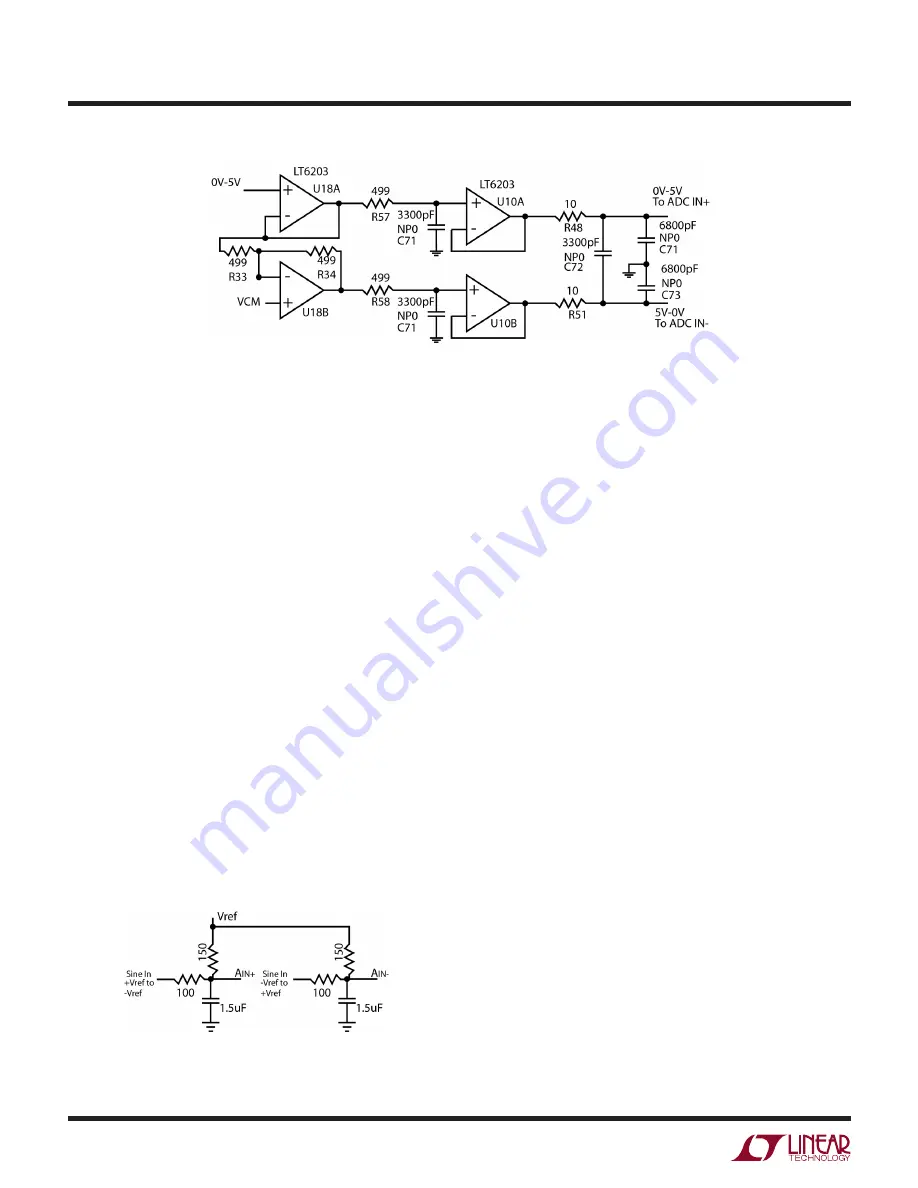
4
dc1925af
DEMO MANUAL DC1925A
DC1925A SETUP
Data Collection
For SINAD, THD or SNR testing a low noise, low distortion
differential output sine generator such as the Stanford
Research DS360 should be used. A low jitter RF oscillator
such as the Rohde & Schwarz SMB100A or DC1216A-C
is used as the clock source.
This demo board is tested in house by attempting to
duplicate the FFT plot shown in the typical performance
characteristics of the LTC2378-20 data sheet. This involves
using an 80MHz clock source, along with a differential
output sinusoidal generator at a frequency of 2.0kHz.
The input signal level is approximately –1dBfs. The input
is level shifted and filtered with the circuit shown in Fig-
ure 4. A typical FFT obtained with DC1925A is shown in
Figure 5. Note that to calculate the real SNR, the signal level
(F1 amplitude = –0.998dB) has to be added back to the
SNR that PScope displays. With the example shown in Fig-
ure 5 this means that the actual SNR would be 103.668dB
instead of the 102.67dB that PScope displays. Taking the
RMS sum of the recalculated SNR and the THD yields a
SINAD of 103.62dB which is fairly close to the typical
number for this ADC.
Figure 3. Single-Ended-to-Differential Driver
There are a number of scenarios that can produce mislead-
ing results when evaluating an ADC. One that is common
is feeding the converter with a frequency, that is a sub-
multiple of the sample rate, and which will only exercise
a small subset of the possible output codes. The proper
method is to pick an M/N frequency for the input sine wave
frequency. N is the number of samples in the FFT. M is
a prime number between one and N/2. Multiply M/N by
the sample rate to obtain the input sine wave frequency.
Another scenario that can yield poor results is if you do
not have a sine generator capable of ppm frequency ac-
curacy or if it cannot be locked to the clock frequency. You
can use an FFT with windowing to reduce the “leakage” or
spreading of the fundamental, to get a close approxima-
tion of the ADC performance. If windowing is required,
the Blackman-Harris 92dB window is recommended. If an
amplifier or clock source with poor phase noise is used,
windowing will not improve the SNR.
Layout
As with any high performance ADC, this part is sensitive
to layout. The area immediately surrounding the ADC on
the DC1925A should be used as a guideline for placement,
and routing of the various components associated with the
ADC. Here are some things to remember when laying out a
board for the LTC2378-20. A ground plane is necessary to
obtain maximum performance. Keep bypass capacitors as
close to supply pins as possible. Use low impedance returns
directly to the ground plane for each bypass capacitor.
Use of a symmetrical layout around the analog inputs will
minimize the effects of parasitic elements. Shield analog
Figure 4. Differential Level Shifter





























